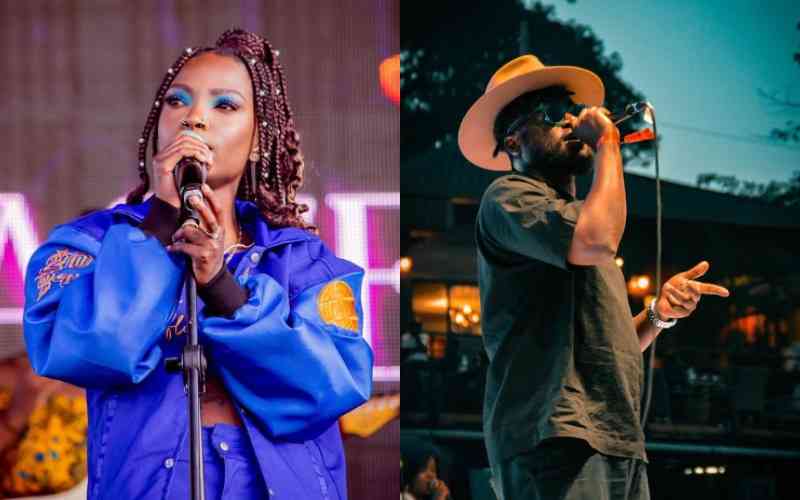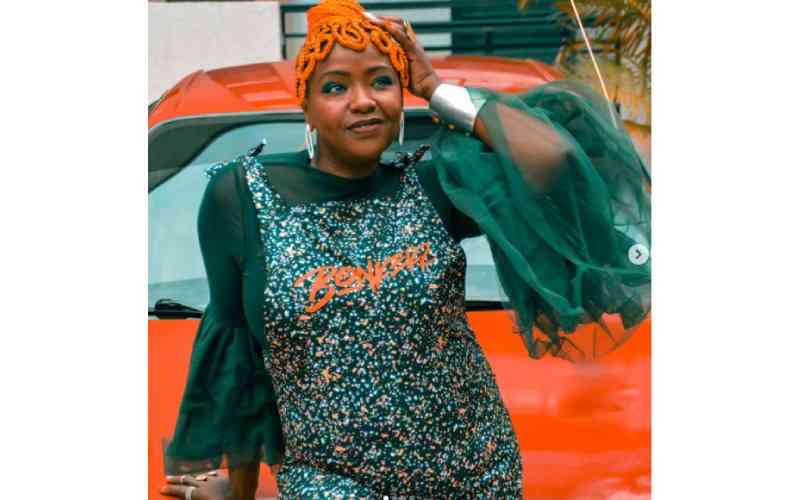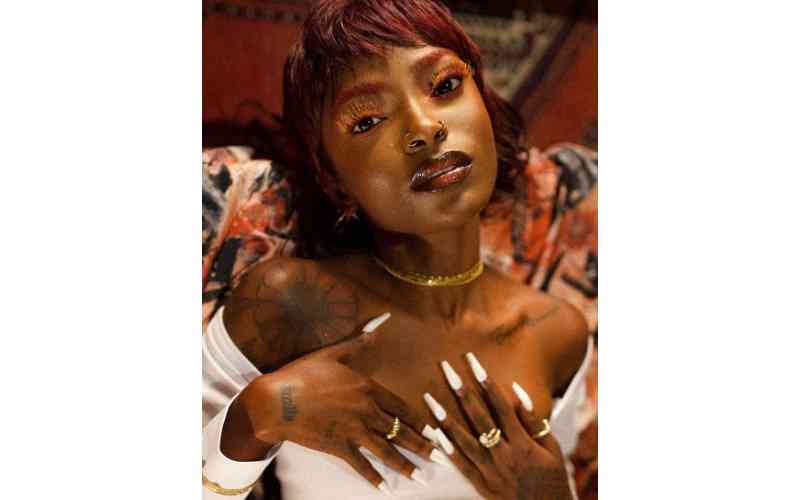
Kenya’s mainstream music circuit is flourishing, and artistes who have the numbers are making money.
The likes of Bahati, Otile Brown, Khaligraph Jones, Nadia Mukami, Jovial, Willy Paul and King Kaka are widely recognised.
They are the thought leaders of the Kenyan music industry and dominate endorsement deals, show line-ups and the entertainment business in terms of bookings, placements and opportunities.
DJ Calz of MO Radio. However, thinks many have the wrong idea.
“Most consumers believe Nairobi is Kenya and this caters for every Kenyan. Mombasa or the Coast region for example has its culture and superstars that are regional, such as Sususmila. The regional bias is too much when Kenya has different counties, ethnicities, and cultures. To generalise Nairobi as the mainstream, would be false,” says DJ Calz.
His opinion is shared by radio presenter Kimintah Call.
“The Maa community (Maasai, Baringo, Samburu) for example is a large and devoted divide. They are interactive the whole day, including odd hours on our shows whether on social media or call lines.
"Our listenership is broad, ranging from local levels like Rongai, Kitengela, and Narok, to beyond where Kenyans in the diaspora, or neighbouring countries like Tanzania want to consume the content. We had to adopt an online radio platform, so everyone interested can be included in the running shows, and this is a motivation for us,” says Kimintah.
With each community in Kenya having its heroes, reaching a consensus is hard.
Whether it is Mugiithi stars such as Samidoh or Prince Indah and Musa Jakadala for the Luo community, Nairobi’s mainstream market is a basket with many flavours.
The audience has to cut across sex, age, culture, level of income and education, race, ethnicity and other demographic factors.
Once one has established these you can then have the courage and comb under the surface to find Kenya’s real stars, the bubbling internet stars called the “Alté community”.
Alté is a connotation for alternative. The alternative music scene in Kenya was born as a response to a mainstream music scene that has developed too slowly.
Nu Nairobi
Tastemakers from alté communities such as Skeme Music, believe Nu Nairobi (a smaller fraction of the Alte community) was formed through frustrations of gate-keeping and lack of equal opportunity.
Through this, media broadcasters, artistes, fashion designers, and all-round creatives took initiative to uplift themselves socially, economically and politically.
“It is a paradigm shift,” says rapper and stylist Chaleslim.
“Everybody who is woke knows it is happening and they can feel it in their hearts,” he adds.
His peer James Gichuru echoes the same sentiments.
“It is time for a new generation. All the old heads, time for you to bounce. We are beginning new ideas that will take Kenya to the next level.”
Such ideas are captured in songs such as Taio’s Let The Kids Play produced by Fvzzkill.
Some of the nuances they push are collaboration, community and co-creation.
“It is about collaboration. It is about community and sharing the little resources we have,” Hiribae says.
The alté community also feels misrepresented by the mainstream identity of Kenya whether musically, aesthetically or culturally. So they are leveraging tools such as social media to paint an alternative fabric of what Kenya is to outsiders.
“Alté music is any music that is not mainstream. It is curated for a smaller but specific audience. It is mainly pushed by independent artistes and is experimental. The Kenyan alté scene is vibrant, unlike in the past when record labels controlled the industry, forcing artistes to make music in mainstream genres such as Kapuka and Genge,” says Agnes Opondo, Head of A&R at Mdundo.
This revolution began with indie artistes.
It started in 2008 when Muthoni Ndonga birthed the Blankets & Wine festival because she was not being booked for enough gigs.

Or, the likes of Kenya’s first electronic music pioneers Just A Band who were offering the industry a much more eclectic sound than Kapuka, or Genge that was being pipelined by Kenya’s popular acts of the time.
They were called “cool kids” or “rich kids”, and even had a rumble of being elitist and classist towards the rest of the pack.
“We just wanted to form our thing. We were not necessarily putting any labels on it. We just wanted to put out something dope,” says Blinky Bill.
Blinky, who went on to be featured and tour the world both as a solo act and with his group Just A Band, is the true essence of the Alté Nairobi faculty.
Despite not being heralded nationwide, Blinky has worked with the likes of Grammy-nominated American artistes Goldlink, and Nneka, and has produced if not being affiliated with international campaigns for brands such as Emirates, TED X, Okay Africa, and Afropunk.
His peer, Muthoni has also been a staple in the vibrant Swiss music scene, and being nominated for the Swiss Grammy Awards on merit of her work makes her a staunch mover of the Alté scene.
“A lot of the ideas to challenge the status quo were eminent and pre-existed. However, after seeing artistes from Nigeria’s alté scene erupt, that put a battery in everyone’s back,” says producer Kev Beatz.
Alté artistes are taken seriously by brands, bagging corporate gigs and deals as is the case with Simply Yaba.
He recently headlined a show in Kitui in partnership with Kenya Cane, which has also partnered with other alternative artistes including Coster Ojwang, Akoth Jumadi and Zaituni Wambui, offering them platforms to showcase Kenya’s rich cultural heritage through their music.
Even though Kenya’s alte artistes may seem handicapped in challenging the mainstream status quo domestically, their star is being recognised by international on-lookers and stakeholders.
International recognition
Most recently, R&B singer and songwriter Xenia Manasseh released her debut album Love/Hate Part 1.
Although Xenia can be classified as a B-tier artiste in Kenya, outside the borders she is writing for Teyana Taylor, Friday, and big R&B stars in Los Angeles.

From BET, Vibe Magazine, and Spotify Global, the marketing of her album engineered by Sony Music’s The Orchard is priming her as one of the leading and rising starlets of the R&B genre.
But behind Xenia are multiple Kenyan artistes, executives, fashion designers, publicists, and producers who are helping her achieve these lofty heights.
The same treatment is offered to other artistes to steer Kenya to a collective conscience of greatness that can be celebrated to the tune of Nigerians and South Africans, who have scaled up their success to both emerging markets and established ones.
“Xenia is a glaring sample size. How about Elsa Majimbo? We waited for her to be celebrated outside before we could give her her flowers. There is this attitude in the Kenyan mainstream - clapping for someone after they have been validated outside, and this needs to change,” says music journalist King Bee.
To understand the alté scene in Kenya, one has to identify the leaders. There is none, however. Kenya’s alté scene is made up of different subcultures - music, film, comedy, fashion, tech and innovation, fintech, and art.
In music though, they are genreless as artiste Ukweli, who was part of YouTube’s Black Voices 2022.
The programme highlighted the most rapid black creatives globally, maintaining that Kenyan and African music is not what people think it is.
“The connotation that African music is going to have a guitar or have conga drums is not accurate. African music is simply made by Africans. Whatever they make will be African music because I am from Africa,” says Ukweli.
Ukweli is one of Kenya’s most streamed artistes on Spotify, raking in almost a quarter of a million monthly listeners, alongside vocalists such as Idd Aziz.
Trendsetters Kinoti, Xenia Manasseh, Karun, Njeri, Valleri Muthoni, Bey T, Maya Amolo, Mau From Nowhere, King Kerby, XPRSO and Ethan Muziki represent the voice of Kenya’s younger audience and the more international sound that has not been embraced due to backward music policies that do not allow their music the same shine as mainstream counterparts.
“What makes the Kenyan Alté scene unique is the variety available and the fact that the Kenyan audience is receptive to new experimental sounds. This has not only allowed artistes to thrive but also encouraged them to create an identity in the alté scene. For example, Yaba describes his contemporary Rhumba sound as Rhumbacane. Crooner Ethan Muziki calls his sound SWAY,” says Agnes.
“Social media has made us more accessible to the world, now we understand that YouTube is more of a visual platform. Therefore, how we would approach releasing our tracks is not the same way we used to do. We must first appeal to the sense of sight before anything else,” says Afropop singer Ochiko.